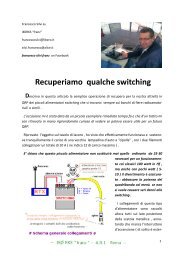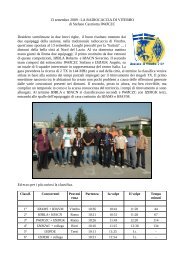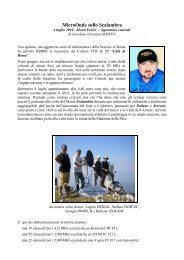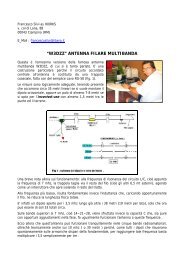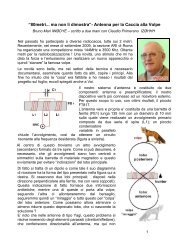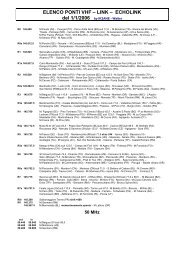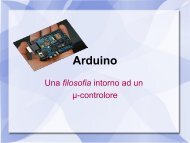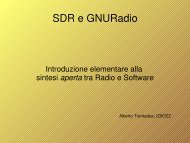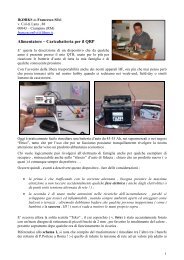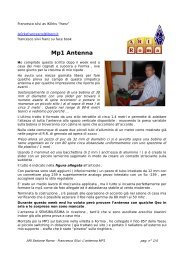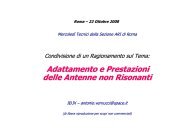Progetto e realizzazione di una Yagi 3 el. per i 50 MHz - ARI Roma
Progetto e realizzazione di una Yagi 3 el. per i 50 MHz - ARI Roma
Progetto e realizzazione di una Yagi 3 el. per i 50 MHz - ARI Roma
You also want an ePaper? Increase the reach of your titles
YUMPU automatically turns print PDFs into web optimized ePapers that Google loves.
L’impedenza caratteristica Z 0 in Ohm si <strong>di</strong>mostra [1] essere uguale a :<br />
2S<br />
Z<br />
0<br />
= 276 *log( )<br />
d<br />
dove :<br />
S = <strong>di</strong>stanza fra i conduttori (centro-centro)<br />
d = <strong>di</strong>ametro esterno dei conduttori<br />
36<br />
32<br />
28<br />
Lunghezza <strong>el</strong>ettrica (deg)<br />
24<br />
20<br />
16<br />
12<br />
8<br />
4<br />
0<br />
0 0.1 0.2 0.3 0.4 0.5 0.6 0.7<br />
XL/Z0<br />
Figura 11 – Lunghezza <strong>el</strong>ettrica d<strong>el</strong>l’Hairpin in funzione d<strong>el</strong>la reattanza normalizzata<br />
Avendo posto il <strong>di</strong>ametro esterno d d<strong>el</strong> tubo <strong>di</strong> alluminio pari a 6 mm e la spaziatura S pari a 55 mm, si<br />
ottiene <strong>una</strong> impedenza caratteristica Z 0 uguale a 348.6 Ohm, da cui X L /Z 0 sarà uguale a 0.181.<br />
Questo valore restituisce <strong>una</strong> lunghezza <strong>el</strong>ettrica d<strong>el</strong>l’Hairpin pari a 10.27 deg, da cui deriva <strong>una</strong> lunghezza<br />
fisica L pari a 16.6 cm.<br />
La figura 12 mostra come è formato un classico Hairpin, con i parametri geometrici definiti sopra.<br />
d<br />
S<br />
L<br />
Figura 12 – Hairpin e suoi parametri geometrici



